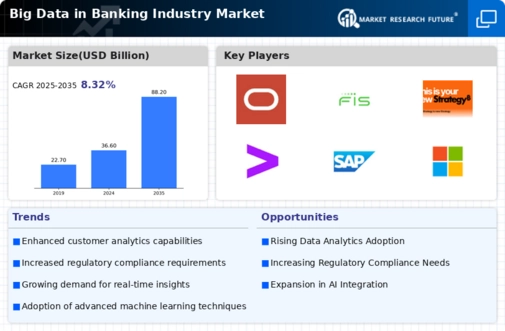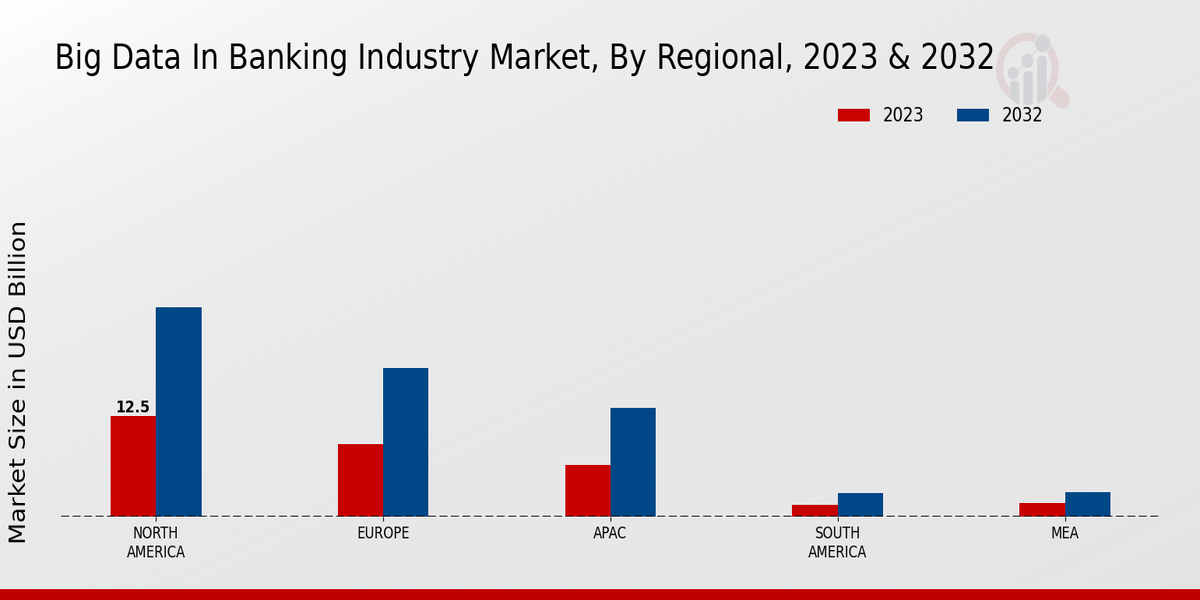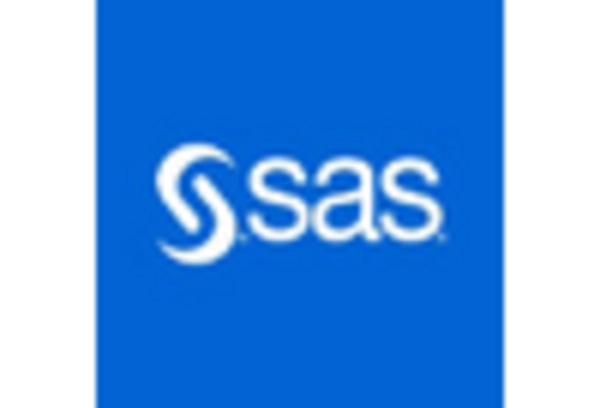Regulatory Compliance
Regulatory compliance is a significant driver in the Big Data in Banking Industry Market. Financial institutions face stringent regulations that require them to maintain accurate records and report on various metrics. Big data analytics enables banks to efficiently manage compliance by automating data collection and reporting processes. This not only reduces the risk of non-compliance but also minimizes the associated costs. With the increasing complexity of regulations, banks that leverage big data for compliance purposes can enhance their ability to adapt to changing requirements. The potential for reduced compliance costs and improved accuracy makes big data a vital component in the Big Data in Banking Industry Market.
Market Competitiveness
Market competitiveness is a driving force in the Big Data in Banking Industry Market. As more financial institutions adopt big data technologies, the competitive landscape is rapidly evolving. Banks that effectively utilize big data analytics can gain a competitive edge by offering innovative products and services, improving customer engagement, and enhancing risk management. The ability to analyze market trends and customer preferences allows banks to make informed strategic decisions. It is projected that the adoption of big data analytics will continue to rise, with an expected market growth rate of over 25 percent in the coming years. This competitive pressure compels banks to invest in big data solutions to remain relevant in the Big Data in Banking Industry Market.
Operational Efficiency
Operational efficiency is a key driver in the Big Data in Banking Industry Market. Banks are harnessing big data analytics to streamline their operations, reduce costs, and improve decision-making processes. By analyzing data from various operational aspects, such as transaction processing and customer service, banks can identify inefficiencies and optimize their workflows. This not only leads to cost savings but also enhances service delivery. It is estimated that banks that implement big data solutions can achieve operational cost reductions of up to 20 percent. As the banking sector seeks to improve profitability, the focus on operational efficiency through big data becomes increasingly pronounced in the Big Data in Banking Industry Market.
Enhanced Customer Experience
The Big Data in Banking Market is increasingly driven by the need for enhanced customer experience. Financial institutions are leveraging big data analytics to gain insights into customer behavior, preferences, and needs. By analyzing vast amounts of data from various sources, banks can tailor their services and products to meet individual customer requirements. This personalized approach not only improves customer satisfaction but also fosters loyalty. According to recent estimates, banks that effectively utilize big data can increase customer retention rates by up to 15 percent. As competition intensifies, the ability to provide a superior customer experience becomes a critical differentiator in the Big Data in Banking Market.
Fraud Detection and Prevention
Fraud detection and prevention represent a crucial driver in the Big Data in Banking Market. Financial institutions are increasingly adopting big data technologies to identify and mitigate fraudulent activities. By analyzing transaction patterns and customer behavior in real-time, banks can detect anomalies that may indicate fraud. This proactive approach not only protects the bank's assets but also enhances customer trust. Reports suggest that banks utilizing big data analytics for fraud detection can reduce fraud losses by as much as 30 percent. As cyber threats evolve, the demand for robust fraud detection solutions continues to grow, further propelling the Big Data in Banking Industry Market.


















Leave a Comment